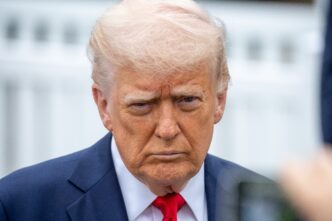Executive Summary
The Story So Far
Why This Matters
Who Thinks What?
Gold prices surged to a new record high on Thursday, October 16, driven by escalating U.S.-China trade tensions, the ongoing U.S. federal government shutdown, and growing expectations of interest rate cuts. Spot gold climbed 0.6% to $4,233.39 per ounce by 0810 GMT, after touching an all-time peak of $4,241.77 earlier in the session, marking its fifth consecutive day of gains.
Geopolitical and Economic Headwinds Fuel Demand
The rally in gold, traditionally a safe-haven asset, has been significantly influenced by recent U.S.-China trade frictions. U.S. officials on Wednesday criticized China’s expanded controls on rare earth exports, calling the move a threat to global supply chains.
Nitesh Shah, a commodities strategist at WisdomTree, noted that “renewed trade frictions (are) adding to uncertainty across global supply chains… investors are increasingly turning to gold.” Shah also suggested that gold’s upward trajectory reflects investor apprehension regarding U.S. policy credibility, expecting the metal to remain above the $4,200 level.
Domestically, the two-week-old federal government shutdown in the U.S. has added to economic uncertainty. A Treasury official indicated on Wednesday that the shutdown could cost the U.S. economy as much as $15 billion per week in lost production.
Monetary Policy and Market Dynamics
Expectations of interest rate cuts have further boosted gold’s appeal. Traders are currently pricing in a 98% chance of a 25 basis-point rate cut in October, with a 95% likelihood of another cut in December. Non-yielding assets like gold typically perform well in a low-interest-rate environment.
Beyond these immediate factors, gold’s robust performance, which includes a 61% year-to-date increase, has also been supported by consistent central bank buying, inflows into gold exchange-traded funds, and a weakening U.S. dollar. U.S. gold futures for December delivery also saw a 1.1% rise, reaching $4,247.10.
Broader Precious Metals Market
While gold soared, other precious metals experienced mixed movements. Spot silver edged down 0.6% to $52.77 per ounce, after reaching a record high of $53.60 on Tuesday. Platinum eased 0.4% to $1,653.93, while palladium saw a modest increase of 0.3% to $1,540.21.
Looking ahead, Aakash Doshi, head of gold metals strategy at State Street Investment Management, projected that for gold to reach $5,000 by 2026, “the market would likely need to see physical demand hold steady but a further upswing in financial demand for gold allocations.”








